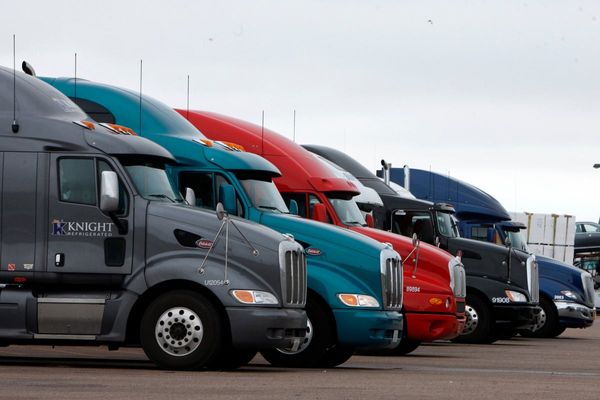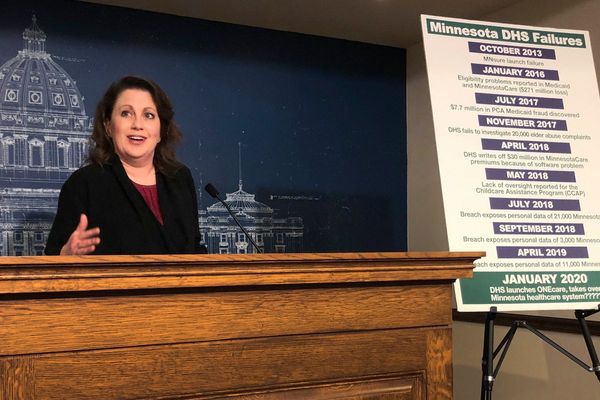
Folks—this is it. Welcome to the very last day of the EV tax credit. I'm sorry to be the one to greet you under these circumstances, but since you're here, we might as well talk about what's next: uncertainty.
We know that automakers are expecting a downturn in EV sales that could last for months, if not longer. Analysts are looking to find a way to set market expectations. And since the third quarter of this year saw blowout sales, Q4 is expected to set the tone for at least the next year.
We're about to learn just how much Americans want EVs without the tax credit in place to offset the cost—and how serious automakers are about meeting their needs with good products at reasonable prices.
Welcome back to Critical Materials, your daily roundup for all things electric and tech in the automotive space. Also on deck: demand for wrecked EVs is increasing (yes, really) and Xiaomi just tore down two Model Ys for science. Let's jump in.
30%: It's Time To Find Out Just How Bad Americans Want EVs

The EV tax credit dies tonight. Since 2008, it's been an evolving staple in what helped build the electric car industry into what it is today. But that's all over now. The training wheels are officially coming off and the EV market will now need to figure out how to balance on its own wheels or hit the pavement, hard.
It's a little insane to think about just how EV sales are expected to have perked up during Q3. A little bit of FOMO has gone a long way, according to industry experts, with Q3 sales anticipated to hit a record high as consumers rushed out to make sure they get the best possible deal they could find.
CNBC explains why sales skyrocketed just before the tax credit ended:
Cox Automotive forecasts sales of EVs hit 410,000 during the third quarter, up 21% from a year earlier. That would easily be the highest amount of EVs ever sold in a quarter in the U.S., as well as a record 10% market share.
“The federal tax credit was a key catalyst for EV adoption, and its expiration marks a pivotal moment. This shift will test whether the electric vehicle market is mature enough to thrive on its own fundamentals or still needs support to expand further,” said Stephanie Valdez Streaty, Cox Automotive director of industry insights.
Cox expects many buyers pulled ahead plans to purchase an EV before the federal incentives sunset.
Today also marks the end of the third quarter. While some deliveries are expected to spill over into Q4, the vast majority of consumers who were planning on getting an EV this year have already signed on the dotted line. And that means the end of the year could be a gigantic nightmare for carmakers—especially those who previously (or almost exclusively) relied on the tax credit to prop up sales.
Automotive News points out that Q4 will likely set a more accurate pace of what America will see for sales in 2026:
In addition to an expected EV slowdown, the fourth quarter should have more 2026 models on the market, and it’s not yet clear whether they will start to reflect higher tariff costs in their pricing, David Oakley, manager of Americas vehicle sales forecasts for GlobalData, told Automotive News.
Even if new-vehicle sales slow in the coming months, industry volume in 2025 still should top the roughly 16 million sold last year, Oakley said.
What happens in the fourth quarter likely will “set the pace for 2026,” said Jonathan Smoke, Cox’s chief economist, adding that increasing affordability challenges hurt the industry’s chances of consistently returning to a sales pace of 17 million.
“The industry will evolve and survive this,” he said. “Choices made on how to absorb or pass along costs from tariffs, or adjust production or sourcing of parts to avoid them, will lead to shifting share dynamics.”
In other words, people didn't just snatch up EVs because they wanted EVs: they did so because that's where the best deals were. Now, those deals are gone, and buyers face the usual affordability pains endemic to the car market these days.
Meanwhile, brands are already anticipating a slump and have worked hard to sell off existing inventory as they taper down production of battery-electric models. But if sales fall steeper than expected, it's not clear how automakers could react—or what that means for the EV transition as a whole in the U.S.
The good news is that EVs are getting cheaper. Even Volvo says that it anticipates its cars reaching price parity sometime over the next year. That's always been the point, though. Eventually, EVs will reach a volume and pace where building the cars will be cheaper than traditional gas-powered cars. They briefly became cheaper for consumers as automakers loaded them up with incentives ahead of the tax credit ending.
When that finally becomes the norm, it will likely be the natural tipping point for consumers who have reliable access to charging infrastructure.
60%: Demand For Batteries From Wrecked EVs Is Surging

Here's a surprising commodity that not many people expected: wrecked EVs. According to a new report from The Guardian, the demand for totaled electric cars is surging in Australia. It's all about stripping the battery pack from the cars and giving them new life as energy storage.
This isn't the first time we've heard about this plan. Automakers and battery recycling firms like Redwood have talked about industrial uses such as this time and time again, but now companies are beginning to capitalize on the sales of the battery packs themselves, and overall battery health doesn't matter nearly as much as it would in your car.
The Guardian explains:
Andrew Chadwick, a lithium battery repair specialist, says even ageing EV batteries have plenty of life in them for other purposes.
“The output requirements for a solar battery are a lot less than what you need for an electric vehicle,” says Chadwick, from Second Life Battery Sales. “Even if they are no longer good for an electric vehicle, with a little finessing, they’re perfect for a solar system.”
Consider an EV battery that is down to 70% capacity. While this will considerably reduce the range of the vehicle, making the car undesirable, it still holds plenty of charge for less-intensive uses.
You could even put a trailer load of second-hand EV batteries together, and power an entire music festival.
This boom is solving a really important problem that EV skeptics love to shout about: "What happens when all of those batteries end up in a landfill?"
Well, the real answer is that many of them are recycled into a goop known as black mass and the raw materials are reclaimed for re-use in new batteries. But this also shows that battery packs can have a second life without needing to go through all of that post-processing. They may end up as home energy storage units, soaking up electrons from solar panels to ease the strain on the grid.
The increased demand for parts and battery packs has sent demand for wrecked EVs soaring at salvage auctions in Australia. In fact, one salvage auction says that the sales of salvage EVs have increased 200% year-over-year, with the cars garnering significantly higher price tag than combustion-powered vehicles.
Originally, it was just wrecked Teslas that these folks were picking up. However, BYDs and MGs have also become the target of the scrappage scheme, according to the report.
It really goes to show how DIY-pragmatism (whether driven by profit, innovation or just sheer will) drives new industries. Modern EVs are still very much a new concept, but it didn't take long for someone to figure out that it's extremely easy to strip a wrecked EV of its guts and turn that into a huge battery bank for a home or business.
Maybe this should be a glimpse into the future of how EVs could reshape the electrical grid—or maybe a hint that EVs, solar, and energy storage really do go hand-in-hand.
90%: Xiaomi CEO Says Tesla Model Y Is 'Very Outstanding' After Full Tear-Down

It's not uncommon for an automaker to buy a competitor's car just to rip it apart. The art of reverse engineering it well known—and as Steve Jobs famously said: "Good artists copy, great artists steal." Obviously, car manufacturers aren't going around and stealing tech in the literal sense, but when a titan of industry manages to get a leg-up, you don't want to be far behind.
Xiaomi's CEO recently mentioned that the company purchased three Tesla Model Ys earlier this year. Unsurprisingly, Xiaomi ripped them apart, presumably to better understand how things ticked inside. And after completing the mission,
Lei Jun, who brought the company from building cell phones to electric cars, admitted that the Model Y was "very outstanding," according to a report from Business Insider.
That's not the trash talk you'd expect from a competitor, especially one with a fresh new crossover (the Xiaomi YU7) hitting the scene. And Jun didn't just complement the Model Y, either. He actively advocated that anybody who didn't buy the company's YU7 should consider Tesla's offering.
Here's what Business Insider reports from Jun's talk:
During his annual speech on Thursday, Xiaomi chief executive Lei Jun said the company had bought 3 Tesla Model Ys and ripped them apart to examine them.
"We bought 3 Model Ys at the start of this year, disassembling the parts one by one, and studied every component, one at a time," he said to a large crowd at the Beijing National Convention Center.
Behind him was a large screen displaying a side-by-side comparison of the Model Y to Xiaomi's new YU7 electric SUV.
Lei added that he found Model Y to be a really good car.
"If you don't choose YU7, you can consider Model Y," the 55-year-old executive said.
The validation here for Tesla is that its competition is treating its best-selling car as the Rosetta Stone that will solve all of the secrets needed to break into the uber-competitive EV market. That's despite other brands outselling the automaker in recent months in various geographic regions of the globe, and also ignoring that Tesla has only given the Model Y minor incremental updates (and its recent facelift) in nearly seven years.
This sentiment is shared by many engineers in the industry. Toyota's engineers once called the Model Y a "work of art" after tearing it down for the same purpose. They called out the car's structural battery pack, gigacasting and the ability for Tesla to make drastic internal changes to the platform while leaving the outer skin untouched.
Basically, it's all of those things that get ignored by the regular consumer. That's what gets picked apart by engineers and earns a brand bragging rights amongst its peers. Maybe this is Xiaomi acknowledging that Tesla did it a favor by helping teach its engineers how to build something of its own. Or maybe it's the brand just paying it forward after Ford's CEO talked up the SU7.
100%: Are EVs Ready To Survive On Their Own Merit?

The fork in the road is finally here. We'll soon learn if EVs are a fad propped up only by policy, or if they're ready to survive based on being the superior propulsion tech.
Realistically, it's likely a mix of both. Electrified vehicles as a whole have been a long-standing goal of many automakers that became accelerated over the last few years (especially by brands looking to chase that Tesla money in the stock market). BEVs may take a backseat to hybrids and EREVs in the near future, but that's not to say they won't still have a place in the driveways of millions of Americans.
So what do you think? Is the industry ready for its glow-up, or does it still have some growing up to do before the market can reliably survive on its own? Let me know your thoughts in the comments.







